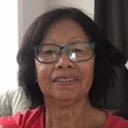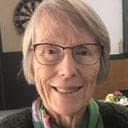Watch out for the whistle
Hamilton netball umpire Sandra Bathgate found she really had to concentrate during the game she controlled today.
It was an Auckland-Manawatu game with a difference — all the players were deaf.
“You really have to concentrate because you are so used to blowing your whistle. You’ve got to remember to put your hand up as well — and of course you can’t use your voice,” she said.
Some of the players did have enough hearing to make out when the whistle was blown — but for most it was a matter of sensing when play was stopped and watching for signs from the umpire.
Deaf people from all over New Zealand are participating in the 25th NZ deaf sports convention which began in Hamilton yesterday.
PICTURES: Top, Ella McNamara (Auckland) gives the thumbs-up and Auckland coach Diane Burch, herself deaf, makes a point at halftime. Below, umpire Sandra Bathgate using signals as well as the whistle to stop play; Auckland wing attack Kathy Seddon in action; Manawatu goal-shoot Dorothy Jones gets the message from coach Gloria Faye at halftime.
- Deaf Sports
- TV/Media





























